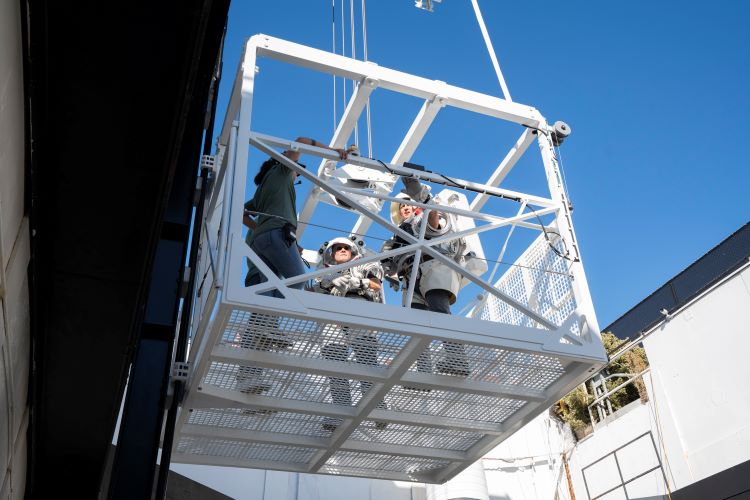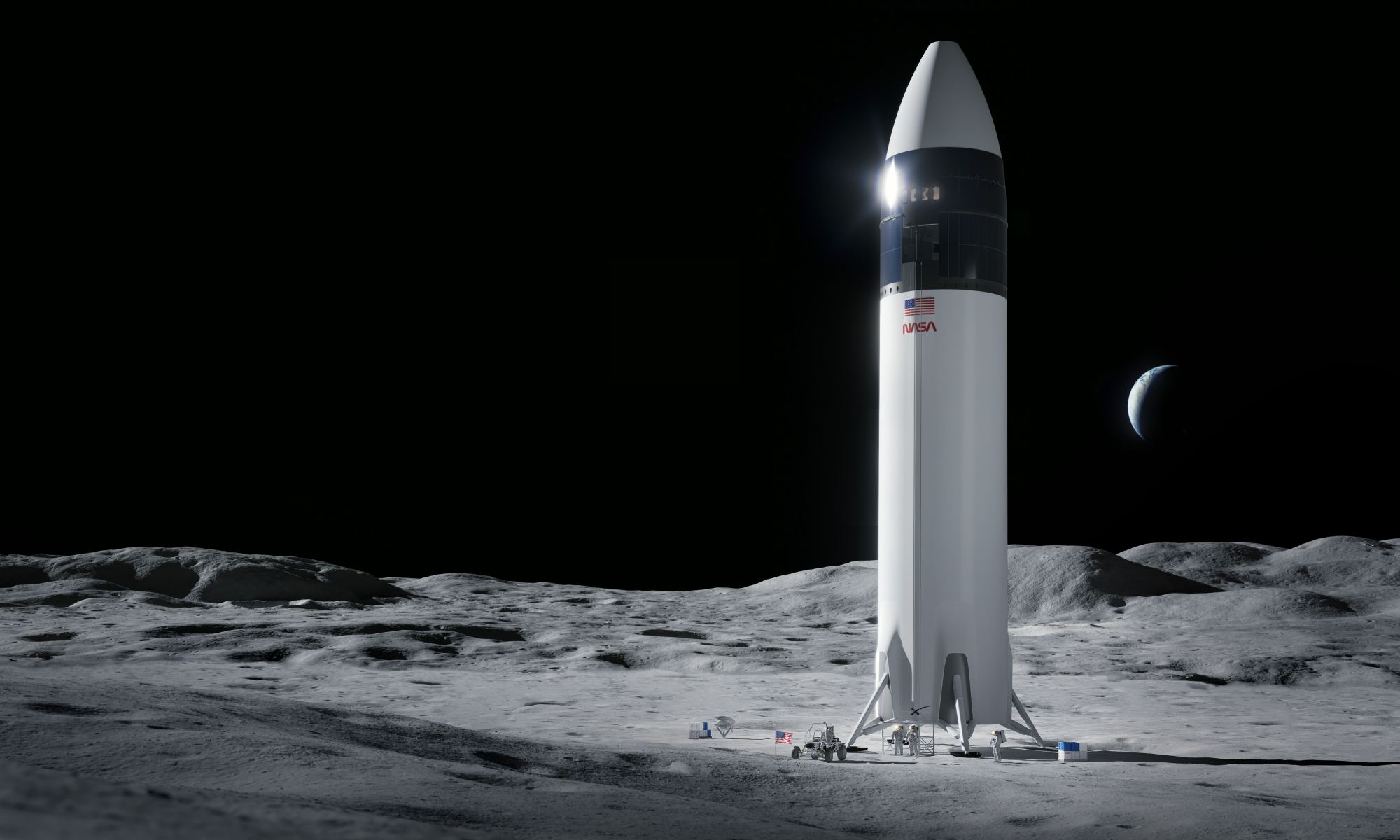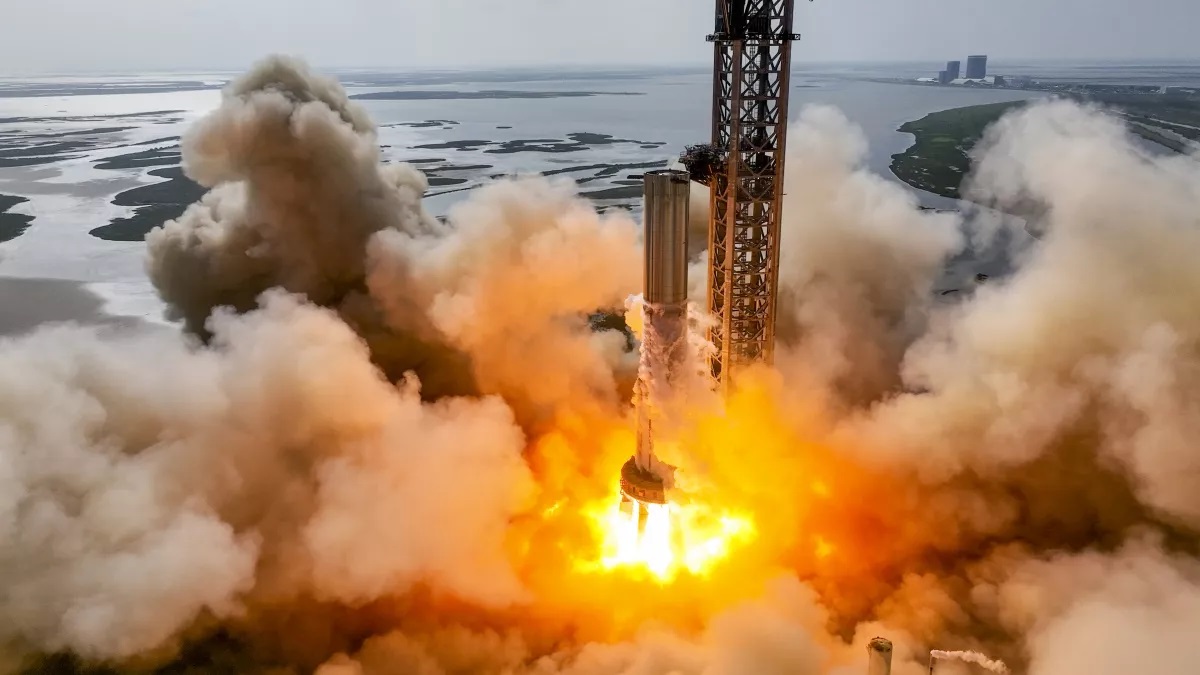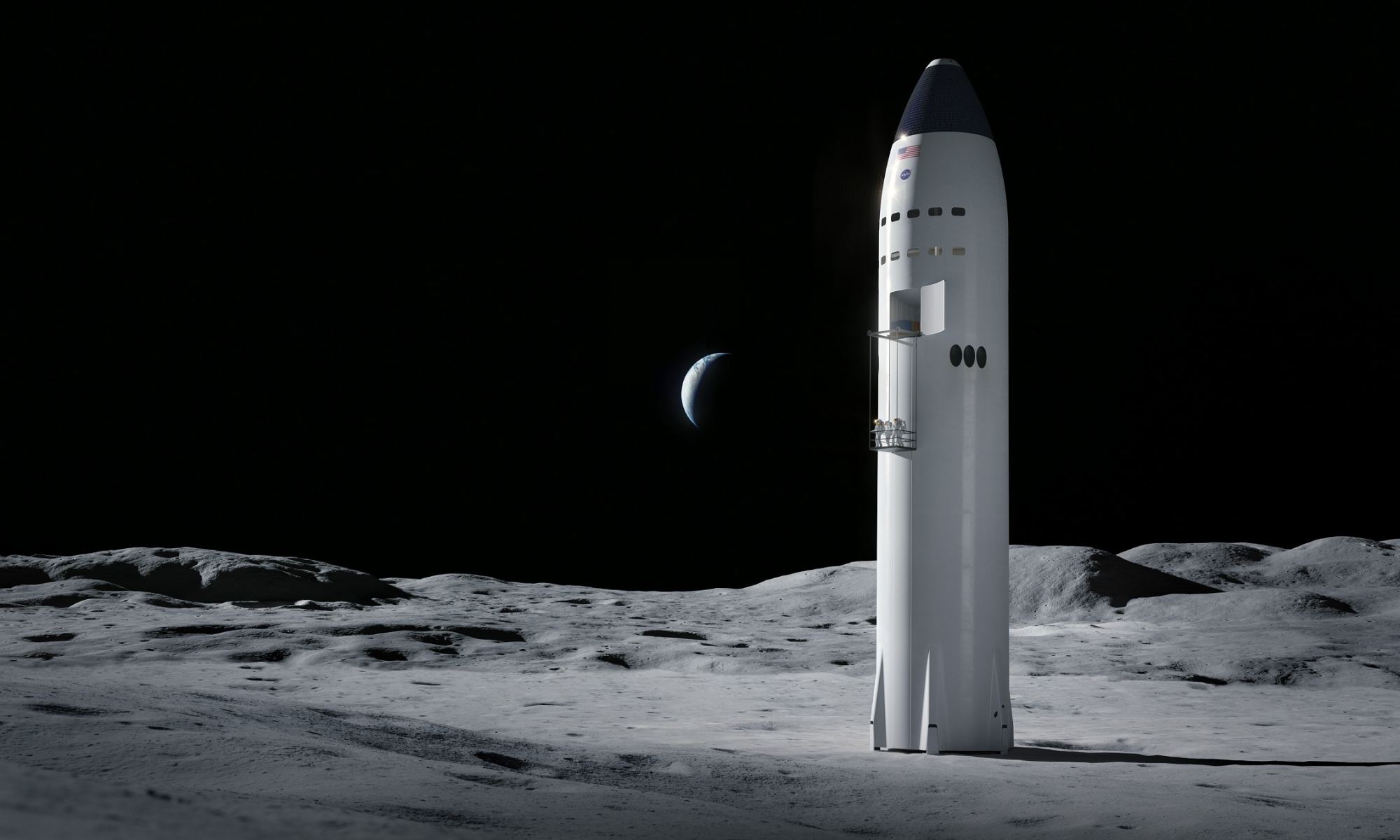The International Space Station (ISS) has been continuously orbiting Earth for more than 25 years and has been visited by over 270 astronauts, cosmonauts, and commercial astronauts. In January 2031, a special spacecraft designed by SpaceX – aka. The U.S. Deorbit Vehicle – will lower the station’s orbit until it enters our atmosphere and lands in the South Pacific. On July 17th, NASA held a live press conference where it released details about the process, including a first glance at the modified SpaceX Dragon responsible for deorbiting the ISS.
Continue reading “SpaceX Reveals the Beefed-Up Dragon That Will De-Orbit the ISS”Astronauts are Practicing Lunar Operations in New Space Suits

Through the Artemis Program, NASA will send astronauts to the lunar surface for the first time since 1972. While the challenges remain the same, the equipment has evolved, including the rocket, spacecraft, human landing system (HLS), and space suits. In preparation for Artemis III (planned for September 2026), NASA recently conducted a test where astronauts donned the new space suits developed by Axiom Space and practiced interacting with the hardware that will take them to the Moon.
Continue reading “Astronauts are Practicing Lunar Operations in New Space Suits”NASA Astronauts are Trying Out the Starship Lunar Elevator

As NASA continues to ramp up efforts for its Artemis program, which has the goal of landing the first woman and person of color on the lunar surface, two NASA astronauts recently conducted training with a replica of SpaceX’s Starship human landing system (HLS), albeit on a much smaller scale. Given that Starship is 50 meters (160 feet) tall, and the crew quarters are located near the top of Starship, the HLS will need an elevator with a basket to transport crew and supplies from the crew quarters down to the surface. The purpose of this training is to familiarize astronauts with all aspects of this system, including elevator and gate controls and latches, along with how the astronauts perform these tasks in their bulky astronaut suits, which both astronauts wore during the training.
Continue reading “NASA Astronauts are Trying Out the Starship Lunar Elevator”SpaceX’s Super Heavy Fires 11 of its Engines in a Long-Duration Test
SpaceX is at it again! Yesterday (November 29th), the company conducted another static fire test with the Booster 7 (BN7) prototype at its Starbase in Boca Chica, Texas. The test began at 02:42 p.m. EST (11:42 a.m. PST) and saw eleven of the BN7’s thirty-three Raptor 2 engines fire for 13 seconds. While static fire tests have been the norm these past few months, this latest might be the prelude to the orbital test flight Musk has been hinting at for close to a year. News of the successful test was shared via Twitter, while NASA Spaceflight (NSF) shared footage of the test via Youtube.
Continue reading “SpaceX’s Super Heavy Fires 11 of its Engines in a Long-Duration Test”Court Turns Down Blue Origin’s Attempt to Prevent SpaceX’s Lander Contract

For months, the commercial space sector has waited for a pivotal case to be resolved. This was none other than the legal action filed by Blue Origin in response to NASA selecting SpaceX to execute the Human Landing System (HLS) contract worth $2.9 billion. This system is a vital piece of the Artemis Program mission architecture, which will be used in the coming years to transport crew and cargo to the lunar surface.
In a recently-announced decision, the U.S. Court of Federal Claims officially shot Blue Origin’s protest down. This puts an end to nearly seven months of legal proceedings and gridlock following SpaceX’s selection back in April. While this means that SpaceX can get back to developing their concept – the Starship HLS – in preparation for the Artemis III missions, it is unclear if that mission will happen on schedule.
Continue reading “Court Turns Down Blue Origin’s Attempt to Prevent SpaceX’s Lander Contract”SpaceX Thinks it can Send Humans to the Moon Sooner Than 2024

It’s no secret that a new Space Race has been brewing over the past few years. This time, rather than being a competition between two federal space agencies, the race has more competitors and is more complicated. In addition to more state competitors, there are also commercial space entities vying for positions and lucrative contracts. Add to that a network of public-private partnerships, and you have Space Race 2.0!
In particular, there has been quite the stir ever since NASA awarded the Artemis contract for the Human Landing System (HLS) to SpaceX. This resulted in legal challenges filed by Blue Origin and Dynetics (SpaceX’s competitors), as well as a lawsuit and messy public relations campaign. NASA has since removed the stop-work order and commenced payments to SpaceX, which recently indicated their HLS concept could be ready to go before the 2024 deadline.
Continue reading “SpaceX Thinks it can Send Humans to the Moon Sooner Than 2024”Musk Says That Refueling Starship for Lunar Landings Will Take 8 Launches (Maybe 4)
The fight over who gets to take the Artemis astronauts back to the Moon continues! It all began when NASA announced that they had awarded the contract for its Human Landing System (HLS), the reusable lunar lander that would ferry the Artemis III astronauts to the lunar surface. This decision did not sit well with the other two finalists, Blue Origin and Dynetics, who appealed the decision because NASA was showing “favoritism.”
The Government Accountability Office (GAO) rejected these appeals, which has prompted Blue Origin founder Jeff Bezos to bring out the big guns. In addition to filing a lawsuit in federal court and lobbying Congress, they have also waged a public relations war against SpaceX itself, calling their safety record and into question. In response, Elon Musk took to Twitter to address Blue Origin’s claims and set the record straight.
Continue reading “Musk Says That Refueling Starship for Lunar Landings Will Take 8 Launches (Maybe 4)”Protests From Dynetics and Blue Origin put NASA’s Lunar Lander Award to SpaceX on Hold

Project Artemis, NASA’s long-awaited plan for sending astronauts to the Moon for the first time since the Apollo Era, has taken many steps forward. Aside from the development of the Space Launch System (SLS), the Orion spacecraft, and the elements that will make up the Lunar Gateway, NASA recently awarded SpaceX with the contract to build the Human Landing System (HLS) that will transport astronauts to the lunar surface.
However, this decision didn’t sit well with the other two companies NASA was also considering. These included Blue Origin, the commercial space company founded by Amazon founder and former CEO Jeff Bezos, and Alabama-based aerospace company Dynetics. After protests were filed by both companies, NASA decided to issue a stop-work order on the HLS award to SpaceX while it reviews the complaints.
Continue reading “Protests From Dynetics and Blue Origin put NASA’s Lunar Lander Award to SpaceX on Hold”NASA Picks SpaceX to Land Astronauts on the Moon!

As part of the Artemis program, NASA is gearing up to send the “first woman and next man” to the Moon by 2024. Central to this is the development of the Space Launch System (SLS), the most powerful rocket since the Saturn V that took the Apollo astronauts to the Moon, and the Orion spacecraft. But after these elements transport astronauts to Lunar orbit, they will need a lander to take them to and from the surface.
For this reason, NASA contracted a number of commercial partners to develop a Human Landing System (HLS). After much consideration, NASA announced on Friday, April 16th, that they had selected SpaceX to continue developing their concept for a lunar lander. When American astronauts return to the Moon for the first time in fifty-two years, it will be a modified version of the Starship that will bring them there.
Continue reading “NASA Picks SpaceX to Land Astronauts on the Moon!”


